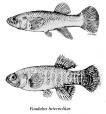Nov
28
2005
Biographies
Author: Frank LaBanca, Ed.D.
Who are you? What makes you tick? What brought all of us to this time and place together? In March, we will be making presentations to the community to share our research experiences. Our program book will contain a biography about each of you. Your task is to write that biography. Please post it here. It is always interesting to learn about the people we are in class with every day.
Samples:
Igor Zelenberg is a senior at Stamford High School. He swims for the varsity team during the winter and plays tennis for the varsity during the spring. This year Igor competed in the 2003 Intel Talent Search and was named a National Semifinalist in the Siemens Westinghouse Math, Science, and Technology Competition. Igor is eagerly awaiting college admission responses. He plans to study Biomedical and Chemical Engineering.
Katelyn Imbornoni is a senior at Stamford High School. Katelyn’s interests in the environment and science in general led to her joining the Research Program last year. In school, Katelyn is involved in many clubs such as Interact, Tri-M (a national music honors society), and is a proud member of the SHS Madrigals Singers. Next year, Katelyn will be pursuing a degree in Elementary Education although she is still unsure as to what school she will be attending.
Frank LaBanca, a Biology Teacher, directs the Applied Science Research Program at Newtown High School. He has taught Biology, Marine Biology, Advanced Placement Biology, and Science Research for the past eleven years. Previously he worked at the University of Connecticut in the Berg Bacterial Genetics Laboratory. His primary project was a mapping strategy for the HLA-C region of the immune system for the Human Genome Project. He has published articles in Biotechnology and Biology Education in Gene, The American Biotechnology Laboratory, The American Biology Teacher, The Science Teacher, The Connecticut Journal of Science Education, and The Natural Selection. Mr. LaBanca is a field consultant for BSCS (Biological Science Curriculum Study) in Colorado, a Chair Judge for the New York Academy of Science’s Science and Engineering Fair, an advisory board member of the Connecticut Science Fair, and an executive board member of the Connecticut Junior Science and Humanities Symposium. Mr. LaBanca has been recognized nationally as a GTE G.I.F.T. (Growth Initiatives for Teachers) Fellow, a RadioShack National Teacher for Excellence in Science, Math, and Technology, the Teachers Insurance Plan Teacher of the Year, and a National Education Association Innovation Grant Recipient.









